Climbing indoor plants: description of types and secrets of care
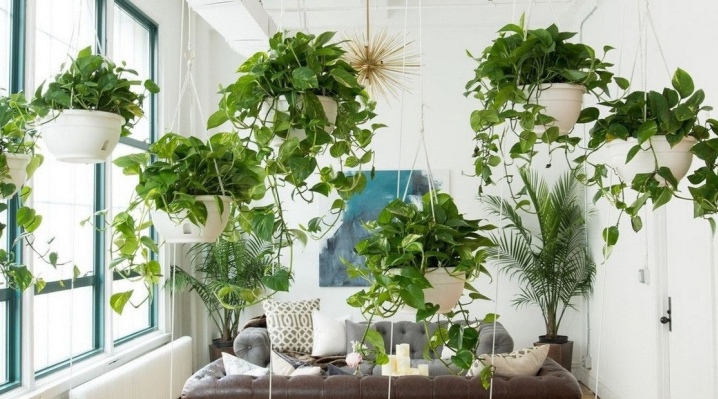
There is no better decoration for a garden plot, house or apartment than natural plants and flowers. Green pets can make the environment more comfortable and welcoming. House plots, thoughtfully decorated with various plantings, acquire an interesting and attractive appearance. In this article, we will take a closer look at spectacular indoor climbing plants and learn how to properly care for them.
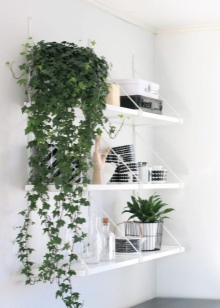
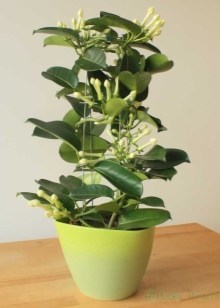

Peculiarities
When furnishing a home, many people settle for attractive curly plantings. They are placed in light hanging vases or baskets, often using special support parts that are needed for hanging shoots.
One of the main features of climbing plants is their decorative effect. With their help, you can decorate any interior. Beautiful curly plantings make the environment livelier and more colorful. The plants in question are wonderful specimens for beautiful vertical landscaping.
Climbing plants are distinguished not only by their spectacular appearance, but also by their unpretentiousness. Most varieties do not require complex care, so even novice growers can easily cope with their cultivation. There are, of course, exceptions to this rule. For example, the same begonia cannot be called a non-capricious plant.
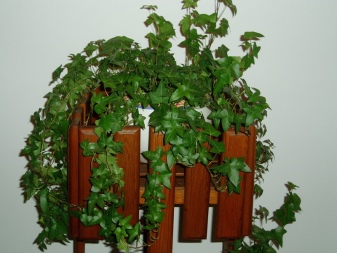
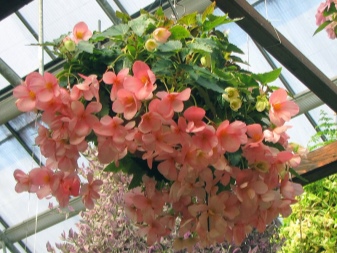
The considered green pets can grow both in partial shade conditions and in bright surroundings.
However, in all cases, you must take into account the characteristics of a certain species, the cultivation of which you are carried away.
Most adorable domestic loaches are perennial and evergreen. Many of them boast intense growth, to the delight of flower growers. Certain varieties during the season can reach a serious mark of 2 m. As a rule, they all have flexible and herbaceous stems, but there are also types of indoor vines that lignify over time.
Another important feature of indoor lianas is the way they are attached to the surfaces of the base. Climbing or tendril-bearing plants braid the supporting part with their shoots, and kornelazychie plants - with roots. Of course, curly varieties are most often found in houses, since they look cute and expressive.
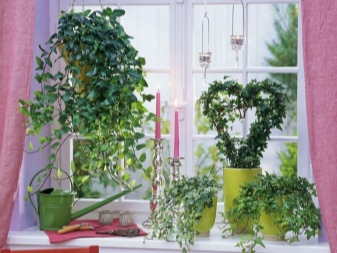
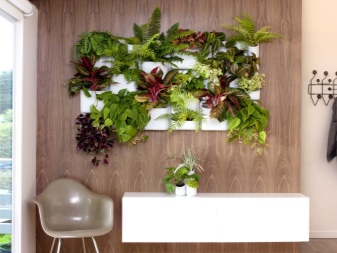
As stated above, climbing plants do not require much maintenance, however, many users find it difficult to water them. This problem is due to the fact that usually considered plants are at a serious heightand water very often flows directly onto the floor. So that the floor coverings do not deform from the gathered puddles, flower growers pull rubber caps, bags on the bottom. These products can be easily removed one hour after the climbing plant has been watered.
If you are going to acquire such ornamental plants, one more important feature should be taken into account - most of them are hygrophilous... We must not forget about watering "bindweed". It is important to spray their leaves in a timely manner, especially when the weather is hot and dry.

Species overview
There are many varieties of beautiful climbing plants. Different types differ both in appearance and in the characteristics of care. Let's take a closer look at a small list of the most popular and common indoor vines.
Ivy
Common ivy is the most popular plant. Most growers choose it for further growing at home. With the help of ivy, it will be possible to organize a spectacular phytowall. Often, the specified plant is used for decorative gardening of window structures.
Breeders have bred many subspecies of ivy. They differ from each other in shape, size, and structure of leaf blades.
The latter elements can be star-shaped, oval or pointed.
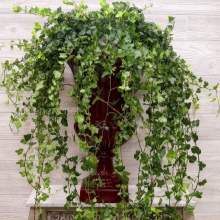
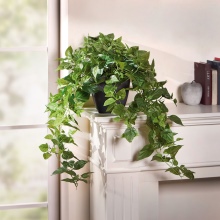
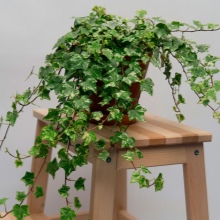
Hoya
Otherwise, this plant is also called wax ivy. A similar name was given to the hoya because of the interesting texture of the leathery foliage, which is distinguished by its large size. This is a spectacular blooming liana with delicate star-shaped flowers. Usually flowers are neutral light color. However, it should be taken into account that during the flowering period, the flowerpot with this plant cannot be rearranged from place to place, as well as turned over... If you do not follow this simple rule, the hoya risks dropping its buds.
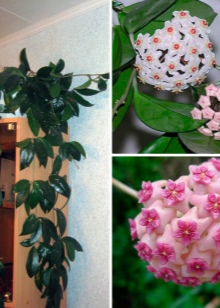
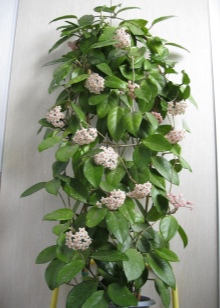
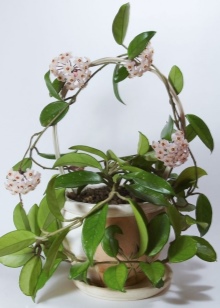
Philodendron
The climbing philodendron attracts a lot of attention as it boasts large-sized leaf blades growing on slender and graceful stems. The flower itself grows very easily, bush soundly, if you tie up shoots in a timely manner, pinch new branches. Breeders have bred very interesting varieties of Philodendron with red purl surfaces of the leaves.
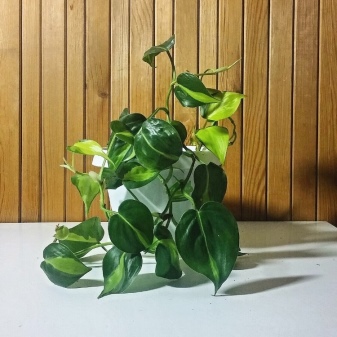
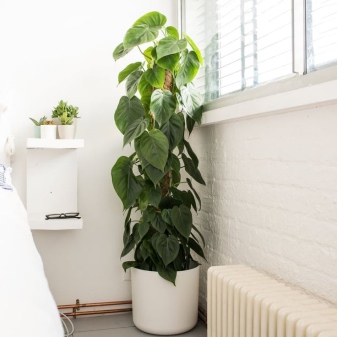
Syngonium
A beautiful plant with a rich varietal variety. Differs in green, snow-white or variegated foliage. The plant can grow up to 1.5 m. The leafy plates of a young indoor flower are characterized by a lancet structure, but over time they inevitably become broad-lobed.
When growing syngonium, it is important to provide it with timely, regular watering. The plant should be in a lighted area in the house. Spraying the creeper will also be useful, since its foliage can quickly dry out.
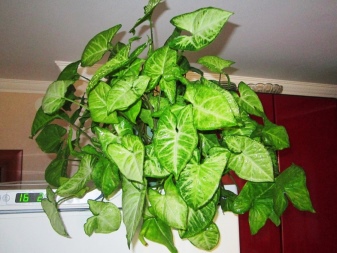
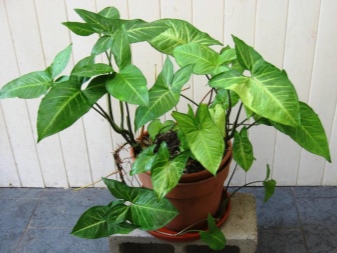
Stefanotis
One of the largest varieties of lianas. Is blooming. An adult specimen can grow to a mark of 5 m. Otherwise, this culture is called Madagascar jasmine. The flower blooms with charming flowers that resemble miniature crowns that gather in inflorescences.
The color of Stephanotis flowers varies. There are specimens ranging from white-cream to lavender shades. This species grows quickly, branches well and richly, so you will need to allocate enough free space for it at home, where it will not be cramped. At the same time, the territory should be not only spacious, but also well-lit - in such conditions, Stephanotis will be as comfortable as possible.
When winter comes, it is recommended to supplement the flower with illumination, since it will need a longer daylight hours.
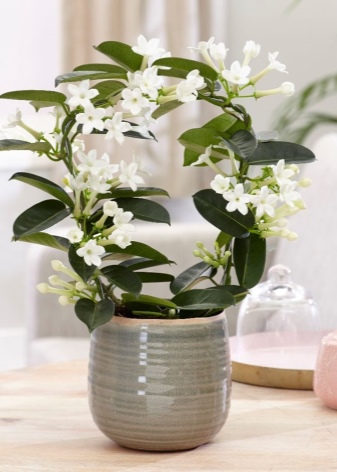
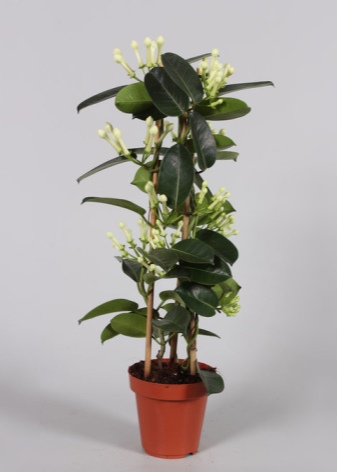
Diplomas
An evergreen tropical crop that looks truly chic. Such decoration can transform even the most boring and monotonous interior. Dipladenia is characterized by a rich green cover, bright flowers. The buds can open more than 10 cm in diameter. They live for more than 2 weeks, emitting a soft and pleasant aroma.
Diplomacy develops especially well and quickly when in open space. When the weather is warm outside, it is recommended to take the green beauty out into the fresh air.

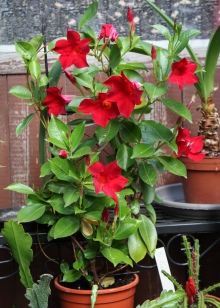
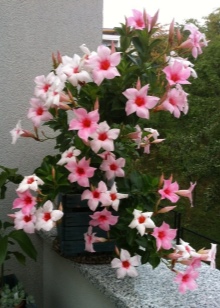
Morning glory
A beautiful, exquisite liana that attracts attention with charming blue-violet flowers. Ipomoea feels great both in the garden and in a city apartment. However, in open ground conditions, this plant lives as an annual - until the first winter season.
Ipomoea flowers are bell-shaped. They evenly cover the thin stems of the climbing plant, which must be well tied to a reliable and stable support. It is important to get rid of old and dried plant buds in a timely manner.Only if this condition is met can one expect longer and more vivid flowering from the morning glory.
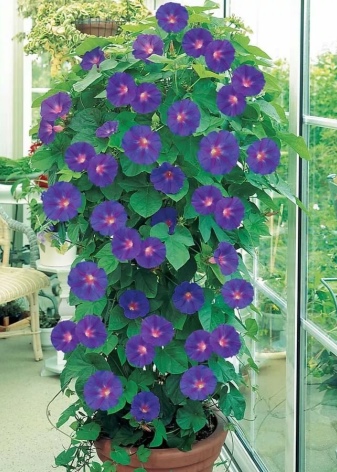
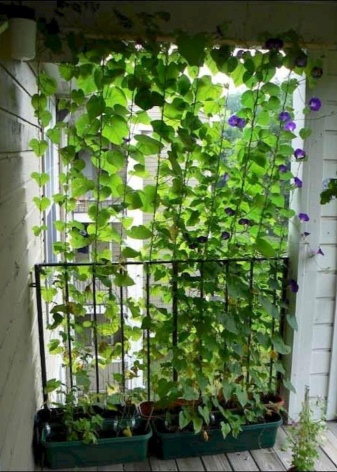
Cissus
One of the closest relatives of the vine. The people called him "birch". This is due to the fact that the non-flowering cissus has an unusual color. On its rich green foliage with a pink seamy side, you can see discreet blotches of a silvery hue. Ornate stems can strongly braid the support and any protruding bases due to small antennae. In the future, the plant can grow magnificently during the first season.
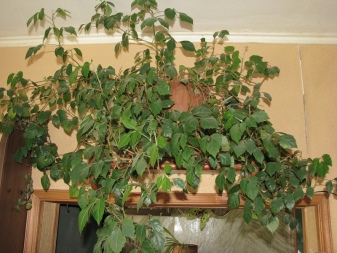
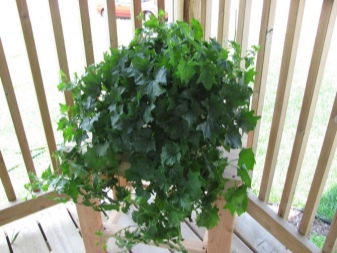
Clerodendrum
A blooming vine that looks sophisticated and graceful. The country of origin of this plant is Japan. The handsome clerodendrum is distinguished by purple terry bunches-inflorescences. In addition, the flower in question exudes an unobtrusive, but very pleasant aroma that many people like.
Clerodendrum needs the utmost care and proper care. It will need to be formed regularly, make suitable dressings. Clerodendrum also needs fresh air for healthy and active growth.
A flower that was grown from cuttings can successfully bloom until the very fall season, decorating almost any setting.
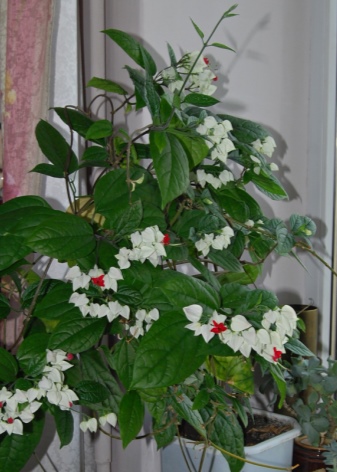
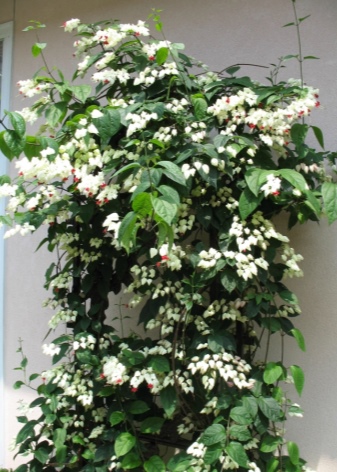
Monstera
A decorative loach that looks impressive and remarkable. Monstera became famous for its huge leaves, which have a juicy, rich dark green color. Cbranches easily climbs along the supporting part chosen for it, since it has lightweight rhizomes. Monstera can grow up to 3 m. Young plantings may differ slightly in the appearance of foliage. It will be solid and heart-shaped, and its color is usually lighter.
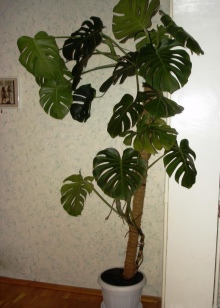
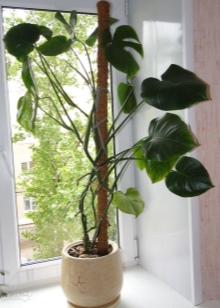
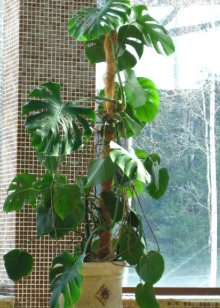
Tradescantia
An insanely popular indoor liana, which can be found in every second apartment. Its main distinguishing characteristic is the presence of soft silvery leaves with a barely noticeable, discreet edge. Liana tradescantia are flowering varieties. The culture has white or purple flowers that look attractive but, unfortunately, are short-lived.
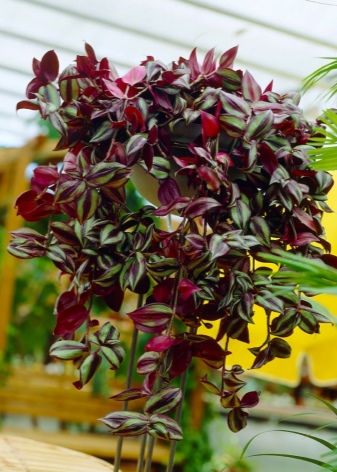
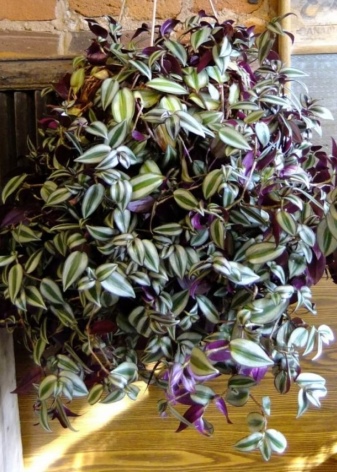
Nephrolepis
This plant cannot be called a full-fledged liana. Rather, it comes from the fern family. It has long and graceful leaf blades, thanks to which such a plant can become a real decoration of a green corner. Nephrolepis looks no less impressive and attractive in a multi-tiered "live" composition. Of all the varieties of plants of this type, it is the most unpretentious and undemanding, the main thing is to provide it with a sufficient amount of the necessary moisture.
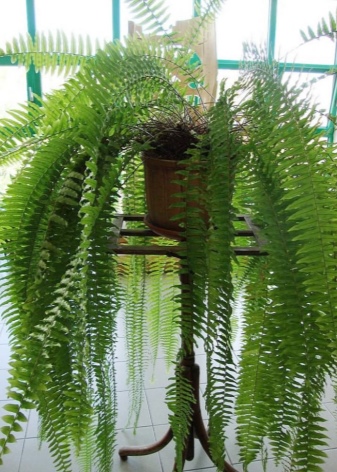
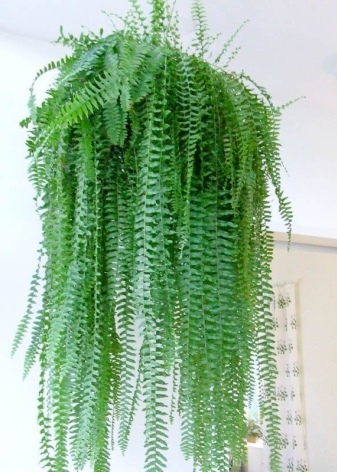
Scindapsus
This loach is also unpretentious, it is very easy and simple to care for it. Scindapsus are shade-loving green pets, so they are often placed in the farthest corner of the apartment. In such conditions, the plant in question feels great. Scindapsus is often grown in hanging pots by the window. Young shoots of loach can be weaving, "hugging" support, and there are those falling down from a flowerpot - both options look attractive.
Particular attention is drawn to the interesting leaves of the scindapsus, which have a heart-shaped structure.
They are covered with light specks, which are scattered over the entire leaf plate of the flower.
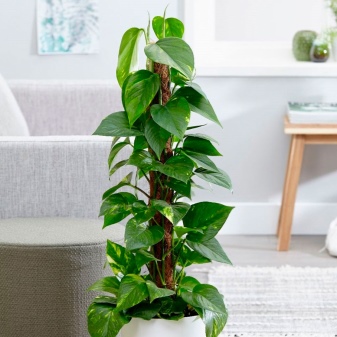
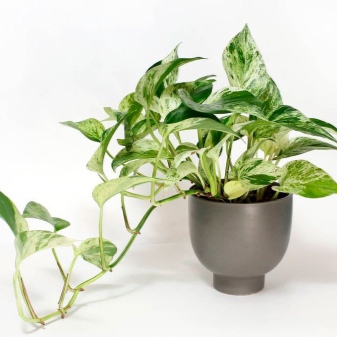
Asparagus
Asparagus or asparagus is a plant belonging to the lily family. It has a striking decorative appearance. The plant has thin flowing stems. Shoots of asparagus can reach from 150 to 180 cm. The homeland of this plant is South Africa.
Asparagus is also called "herringbone" because it has characteristic needle-shaped formations. They are very diverse. Asparagus looks very impressive when it comes to fruiting. At this moment, scarlet fruits hatch in the lower greenery, and the flowers themselves have a nondescript appearance.
If you plan to grow asparagus, you must take into account that it is capricious. He really does not like the sun, he needs nutritious and dry soil. The plant feels great if you place it near the wall opposite the window.
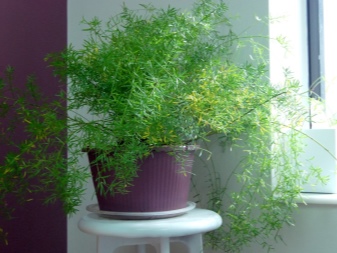

Landing
If you purchased a home vine in a temporary pot, then within 2 weeks it will definitely need to be transplanted to the main place. For this you can simply cross the earthen lump along with the plant itself, so as not to injure the rhizome of the vine... When carrying out this work, you should try to hold the pet in such a way as not to accidentally break the shoots. It is recommended to replant indoor loaches with an assistant - it will be easier and more convenient.
When planting the crop in question, it is important to take care of the drainage of the fertile soil. For this, ordinary expanded clay is perfect, thanks to which the plant will receive moisture evenly. While the plant is small, the pot for it can also be compact, but as it grows, you will have to buy a more spacious "dwelling" for the vine.
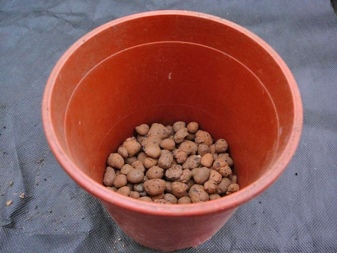
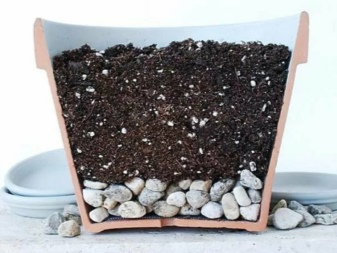
When planting a decorative loach at home, you should take care of high-quality and reliable supports. Without them, an actively growing plant will not keep its shape and frame certain surfaces.
Different parts are used as a support, for example, a moss stick - there are a lot of options.
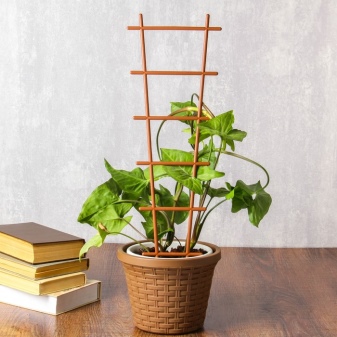
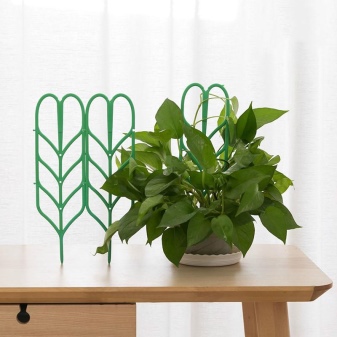
Breeding options
Indoor vines can be propagated in a variety of ways. Let's consider how to do it correctly.
- Apical cuttings. For this type of reproduction, it is necessary to cut off the apical stalk of the vine, and then root it along with the leaves. If the plant has small air roots, the sprout must be immediately dug into the soil, if not, you will have to hold it in water.
- Seed method. This method of breeding indoor lianas is the least frequently used. In implementation, such work turns out to be difficult and not always effective. Only passionflower vine grows easily from seeds.
- Division of the bush. Growing up, the loach can form a kind of daughter bushes, which can be used for the subsequent separation and reproduction of an indoor flower.
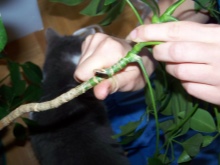
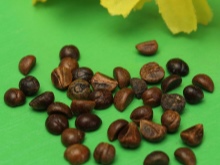
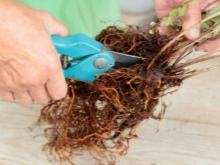
Care rules
Climbing indoor plants need proper care. It is necessary to provide the flowers with optimal conditions for healthy growth. Let's take a look at how to provide this culture with a better environment for life.
Temperature
The main percentage of climbing crops comes from the hot tropics, which is why loaches love warm climates with high humidity. But frosts are very poorly tolerated by lianas. It is important to make sure that in winter the temperature does not drop below 16 degrees, and in summer it does not exceed 21 degrees. If a heater or air conditioner is turned on, do not do it near the flower.
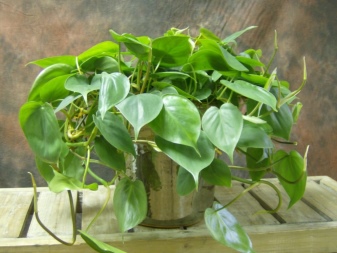
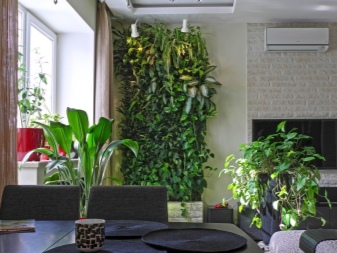
Lighting
Most varieties of indoor vines thrive in light partial shade. Flowers can be visibly burned in direct sunlight. From time to time, flowerpots and pots with vines need to be turned. This is to ensure that the pet receives sufficient light from all directions. Otherwise, the vine runs the risk of stretching in one direction and remaining deformed.
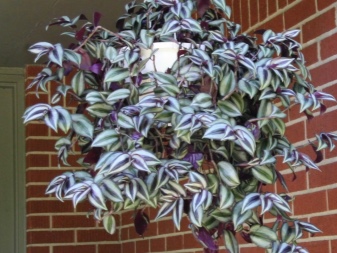
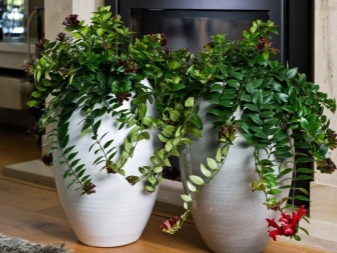
Watering
Climbing houseplants need regular watering and spraying. You can save a flower from hot weather if you use cool water and moisturize the planting at least a couple of times a day. It is advisable to water the vines either in the morning or in the evening. In the middle of the day, when the sun is especially active, it is better not to do this.
Watering the flowerpot should be carried out in the course of drying the soil in it.
But here it is important not to overdo it, because under layers of thick and solid foliage, the earth will retain moisture for a long time.
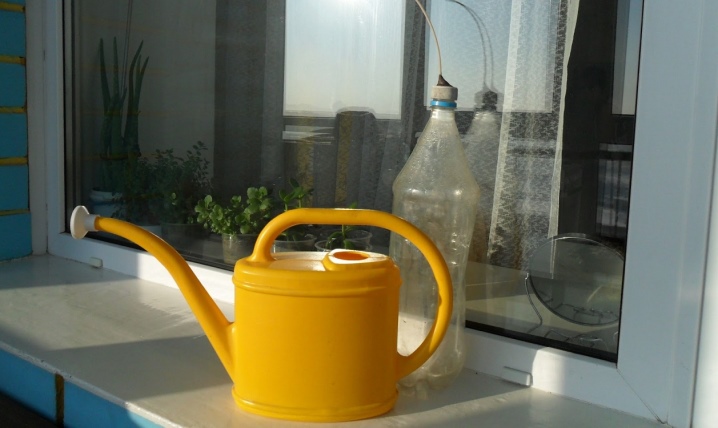
Fertilizers and feeding
Like most other types of indoor plants, climbing vines cannot be left without high-quality and suitable fertilizers. For such green pets, fertile and light soil or special ready-made soil mixtures consisting of suitable components are ideal. The faster the culture grows and develops, the more it will require good feeding. Due to the timely application of fertilizers, the foliage will be more juicy, thick and lush.
Safe mineral dressings are ideal for indoor vines. You can also use high-quality organic matter, previously diluted with water. Each grower chooses the fertilizer for his plantings. The main thing is not to neglect feeding if you want the loach to grow lush and healthy.

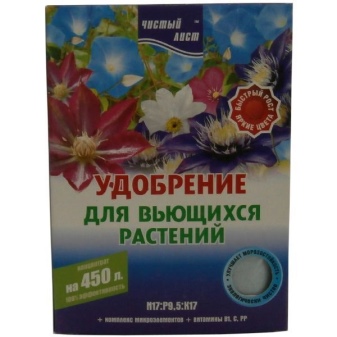
Pruning
Pruning of these beautiful plants should not be relegated to the background. The specified procedure is necessary for vines so that they always maintain a beautiful, neat and well-groomed appearance. The crop should be properly positioned on the chosen support bases and carefully trimmed from time to time. So that the branch located in the center grows long and strong, it will need to be gradually braided around a round support, and then carefully but securely fixed.
If you want the loach to grow fluffy and voluminous, new branches are pinched to the apical shoot. In this way, the processes are formed on the sides.
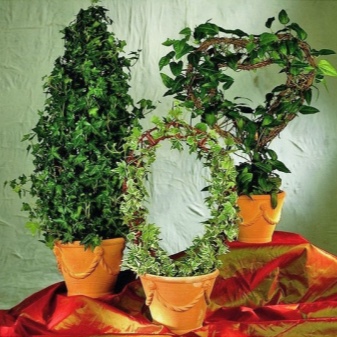

Examples in the interior
As mentioned above, climbing plants can become a real decoration of the interior, making it more attractive, lively and expressive. Let's consider several successful examples of using vines at home.
- Lush climbing plants can make a living room very stylish when placed on either side of the sofa on the wall behind. Plants will attract more attention if they are surrounded by light-colored materials.
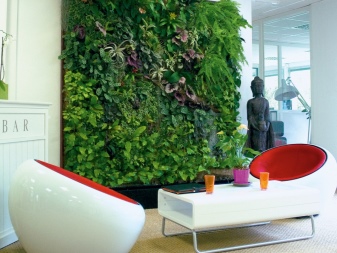

- A solid loach with dense dark green foliage will be a spectacular decoration of a study or library. The plant can be fixed near a window and a tall bookcase. Thanks to this solution, the atmosphere will turn out to be cozy and welcoming, especially if the room is decorated in gentle colors.
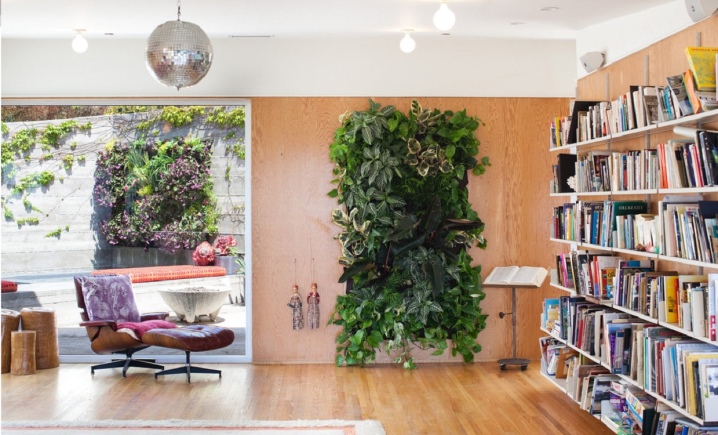
- Indoor lianas with thin and graceful stems can be hung as a decoration for a window in a bright room with wooden and glass furniture.
As a result, the interior will turn out to be very cozy and peaceful.


For information on how to give a different shape to the scindapsus vine, see the next video.































The comment was sent successfully.